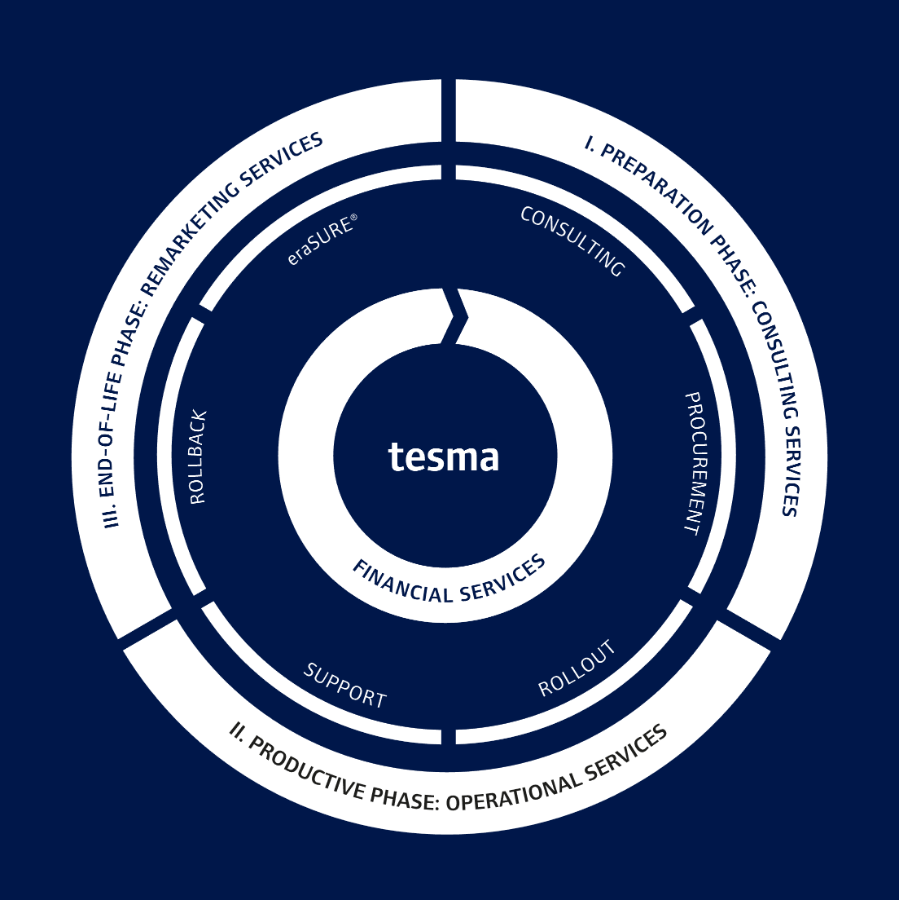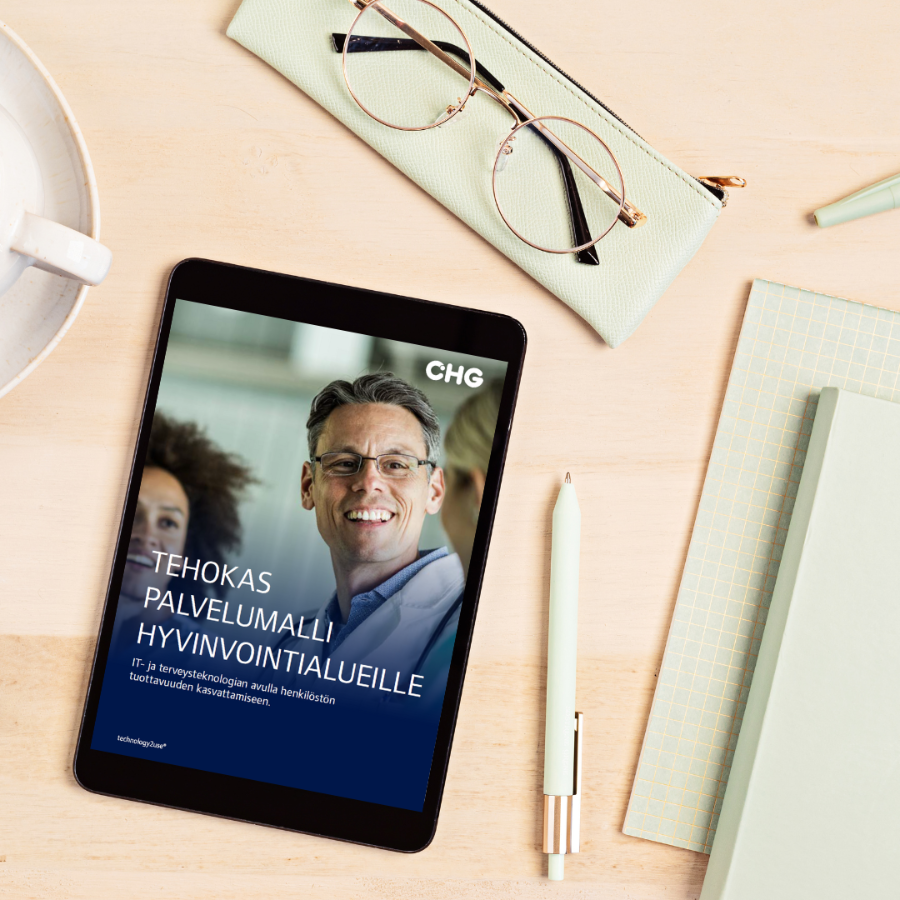The keynote speeches highlight the importance of procurement and technology as an essential element for productivity. Through our service model, we help you to review your procurement model for medical devices and integrate technology into productivity, while increasing user satisfaction.
Increasing productivity responsibly
By using innovative procurement and responsible technology, welfare regions can provide more effective and environmentally friendly services while reducing carbon emissions.
CHG-MERIDIAN SERVICE MODEL
In Finland, only 10% of all equipment investments are financed through leasing. The corresponding figure in Germany and many other countries is 50%. The use of leasing is even lower in welfare areas, but in recent years it has also become more common in welfare areas and the private health sector.
DEVELOPING THE PROCUREMENT MODEL AS PART OF THE STRATEGY
In Finland, only 10% of all equipment investments are financed through leasing. The corresponding figure in Germany and many other countries is 50%. The use of leasing is even lower in welfare areas, but in recent years it has also become more common in welfare areas and the private health sector.
Five pitfalls in developing a procurement model
In terms of productivity and staff satisfaction, it is well known that the budgeting model slows down the realisation of benefits or leaves them undercut by cost reductions. If your organisation is aware of what prevents teams from achieving success, you can ensure that you avoid these pitfalls in your own procurement strategy for health technology utilisation.
Lack of commitment and indecision
Management and key personnel delay in making decisions.
Slow decision-making
Focus on sub-optimisation and acute challenges.
Total cost of ownership and understanding
Total cost of ownership (TCO) monitoring and management are inadequate.
Lifecycle management and governance
A reliable overall view of the equipment life cycle is lacking or missing.
Slowness to change
Response to technological and operational changes slow.
AN EFFECTIVE SERVICE MODEL FOR WELFARE REGIONS: USING IT AND HEALTH TECHNOLOGIES TO INCREASE STAFF PRODUCTIVITY!
Social and health services are currently under significant cost and productivity pressures. At the same time, the demands in terms of laws, regulations and regulation are increasing. Welfare areas have suffered from delays in health care reform. This is reflected in underinvestment in buildings, health technology and IT infrastructure. Innovative approaches and new service models are enabling improvements in staff productivity through technology and digitalisation. The circular economy opens doors to solutions that support controlled budgeting, liquidity and at the same time are environmentally responsible.
We create value for our customers through a few workshops using a very clear, step-by-step approach. It's accessible to every organisation for ease and clarity. For each step, there are standard implementation templates that can be used off-the-shelf, as well as easy-to-follow step-by-step instructions for implementing each step.
As a result of our work, you will receive maximum support for our service model in relation to your procurement strategy for medical devices and the use of the tesma contract and device management system as part of your operations. At the same time, we will refine the procurement guidelines and clarify the procurement process, also taking into account the innovative procurement approach.
WE HELP TO CLARIFY THE SITUATION REGARDING THE CURRENT STATE OF THE PROCUREMENT MODEL
ASSESSMENT OF THE CURRENT SITUATION
We help you assess the current situation so that our customers can take full advantage of our procurement model. For procurement, we will review the interfaces with the well-being area strategy, the current application guidelines, procurement powers, the procurement process and supplier cooperation.
We will highlight key findings and areas for development. Underlying issues:
Procurement and costs
- What is the total cost of medical equipment for each activity?
- What is the difference between budgeted and actual costs?
- Which units and departments use the equipment?
Efficiency and optimisation
- How do departments differ in terms of equipment costs in relation to customers, transactions and number of employees?
- Which departments are using equipment cost-effectively or inefficiently?
- Can the dispersed equipment purchases of the units be combined into a common package?
Governance and strategy
- Are there strategic choices in the use of equipment to increase productivity?
- Is there duplication of equipment in the units, and what is the reason for the duplication?
- What are the overlapping capabilities of the units' investment strategies?
Monitoring and evaluation
- To what extent do the costs incurred fall below the actual costs of purchasing medical equipment?
- Are significant benefits or cost increases expected in the services in relation to medical devices or health technology?
GET IN CONTACT
Take a look at our guide below. If you are interested in finding out how we can help in concrete ways, please fill in the form below.


